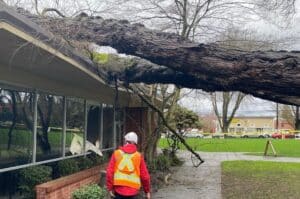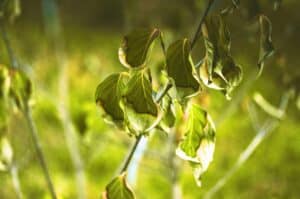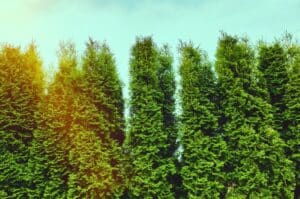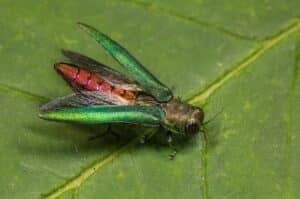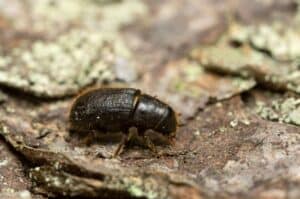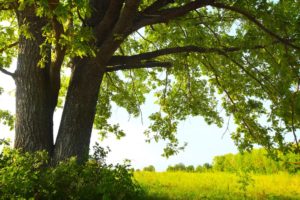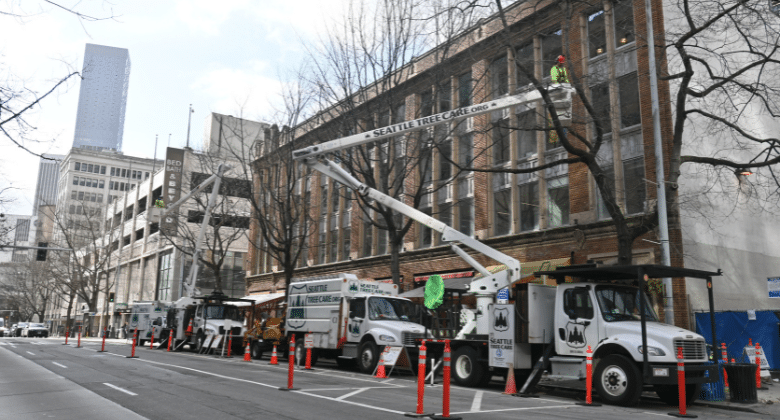4 Seattle Tree Pests – Recognize the Threat
Four hungry insect pests are threatening your trees. Learn to identify these Seattle tree pests and to recognize the damage they cause.
Even if you do everything right when it comes to taking care of your Seattle trees, insect pests can still pose a problem. From chewing leaves to destroying buds to boring into branches and trunks, Seattle tree pests are a pain!
The first step in combating insect pests is identifying the pest and the damage it does. This article will introduce you to four Seattle area insect pests and detail exactly what they do to your trees.
The top four Seattle-area insect pests to look out for are:
- Emerald Ash Borer (Agrilus planipennis)
- Bronze Birch Borer (Agrilus anxius)
- Spongy Moth [Gypsy Moth] (Lymantria dispar)
- Winter Moth (Operophtera brumata)
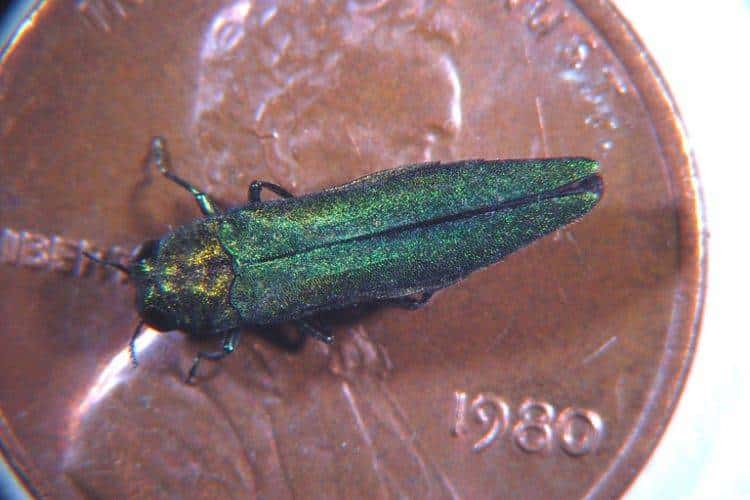
EAB is a Seattle tree pest of great concern due to its continued decimation of ash trees across the country. Photo used courtesy of Howard Russell, Michigan State University, Bugwood.org
Emerald Ash Borer
Emerald Ash Borer (EAB) is an invasive beetle that has been devastating ash trees in the US since it was first spotted in Michigan in 2002. This invasive Asian beetle is identifiable by its metallic, emerald-green elytra (wing covers) and red abdomen.
While EAB’s natural migration speed is one mile per year, accidental introduction via human transport of wood products has aided this pest’s westward march. Though not officially spotted in Washington State at the time of this article, EAB’s presence has been verified in bordering Oregon and is a species of concern with the Washington Invasive Species Council.
Adult emerald ash borers feed on ash leaves before laying eggs on the bark. After hatching, EAB larvae bore into ash trunks and branches to feed on the sapwood. The larvae then pupate within the sapwood and tunnel out when they mature.
Signs of an EAB infestation include:
- Distinctive S-shaped galleries in the sapwood under the bark
- Crown dieback
- Bark deformities, including vertical cracks
- D-shaped exit holes
- Woodpecker feeding holes
- Yellowing foliage
Want more information on the coming threat of the Emerald Ash Borer? Read our in-depth EAB article here!
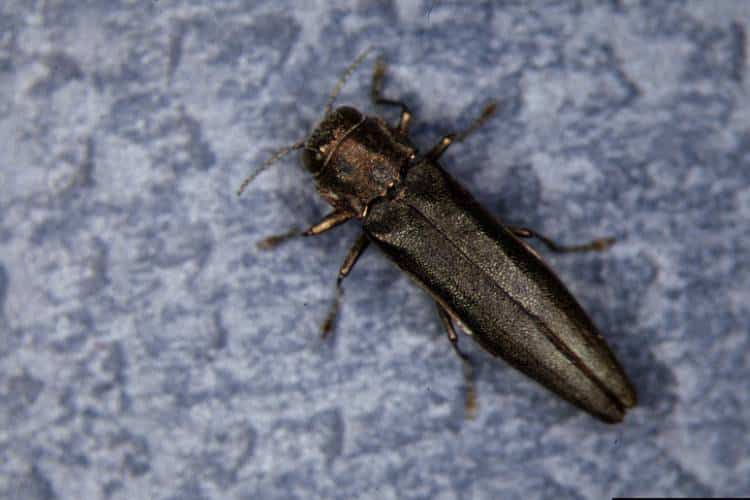
The bronze birch borer is a Seattle pest of concern. Photo used courtesy of Whitney Cranshaw, Colorado State University, Bugwood.org
Bronze Birch Borer
The bronze birch borer belongs to the same genus as EAB (Agrilus), and they affect birch species in a manner similar to the way EAB attacks ash trees. Unlike EAB, the bronze birch borer is native to North America. This elongated beetle is bronze in color.
Adult bronze birch borers lay their eggs on the bark of birch species, and their larvae bore into the trees upon hatching. The larvae feed on the sapwood beneath the bark, where they later pupate and emerge from the trees as a new generation of adults.
Bronze birch borers are voracious pests in Seattle and other parts of Washington state. The University of Washington reports that the beetle has killed up to 70% of birch trees in some areas. You can read our in-depth profile on this birch pest here.
Signs of a bronze birch borer infestation include:
- Sparse canopy foliage
- Dead branches, primarily in the upper crown
- Swollen ridges on the trunk and branches
- Small, D-shaped exit holes
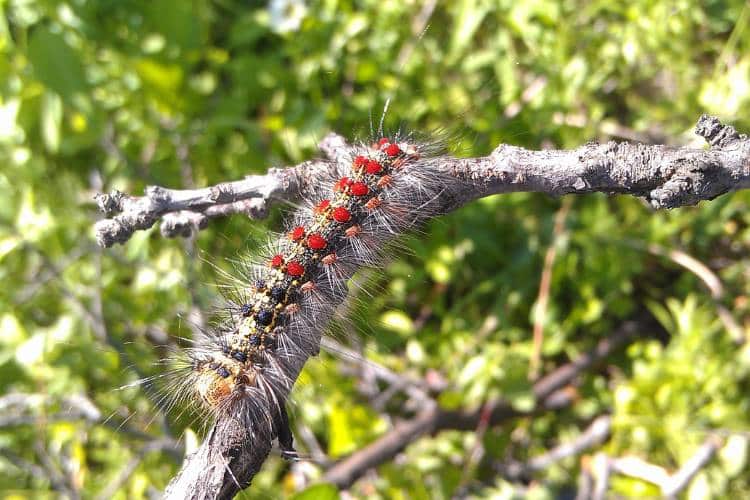
Spongy Moth (Gypsy Moth)
Formerly known as the gypsy moth, the spongy moth is an invasive insect pest originating from Eurasia. The European species was first identified as a pest in the US in 1860, with the Asian variety being first spotted in 1992. Named for their spongy egg cases, it’s the spongy moth caterpillars that attack trees rather than the adults. The caterpillars are approximately 2 inches long, hairy, and have pairs of blue and rusty red spots down their backs.
Adult spongy moths lay their eggs on nearly any surface, including trees and underneath structures such as mailboxes and eaves. Spongy moth caterpillars are voracious eaters and, upon hatching, begin defoliating trees. This loss of leaves disrupts photosynthesis and makes trees vulnerable to additional pest attacks and diseases.
According to the Washington State Department of Agriculture, Washington has the highest number of Asian spongy moth introductions of any state.
Signs of spongy moth infestation include:
- Clusters of caterpillars on tree trunks or branches
- Spongy eggs casings on tree trunks or under branches
- Severe pre-fall defoliation
- Large sections of missing leaves
- Branch dieback
- Increased susceptibility to pests and disease

The winter moth caterpillar is identifiable by its pale green color and the two white stripes running down its length. Photo used courtesy of Fabio Stergulc, Università di Udine, Bugwood.org.
Winter Moth
Winter moth is an invasive pest originating in Europe and was first identified in North America in the 1930s. The moth is named for their high level of adult winter activity. Like other moth tree pests, the species’ caterpillars cause damage, rather than the adults. The caterpillars can be identified by their pale green color and two white stripes running down the length of their bodies.
Adult spongy moths emerge from cocoons in November and are active when temperatures are above freezing. After fall and winter mating, females lay eggs on trees. Winter moth caterpillars hatch in spring and immediately burrow into developing leaf buds where they feed. The caterpillars eat mature leaves as the buds open, defoliating their host trees.
Winter moth caterpillars feed on fruit trees and forest tree species in the Seattle area. Unchecked, winter moth infestations can be fatal.
Signs of winter moth infestation include:
- Defoliation
- Chewed Leaves
- Skeletonized leaves
- Reduced growth
- Damaged flower buds/Early petal drop
Do You Need Help Identifying and Fighting Seattle Insect Pests?
Call Seattle Tree Care today at 206-789-0534. Our ISA-certified arborists have the depth of knowledge and experience to identify and treat any condition your trees face. We’ll show you why we’re the Seattle area’s most trusted tree service company!
SEE MORE ARTICLES FROM OUR b(LOG)
We've got you covered with tips, resources, updates, how-to's, and other helpful information about trees and landscapes in Seattle, Puget Sound, and King County, WA. Join the thousands of smart local residents who get the monthly newsletter from Seattle Tree Care for helpful information you won't want to miss!
There's no spam - we promise! We are committed to keeping your e-mail address confidential. We do not sell, rent, or lease our contact data or lists to third parties.

